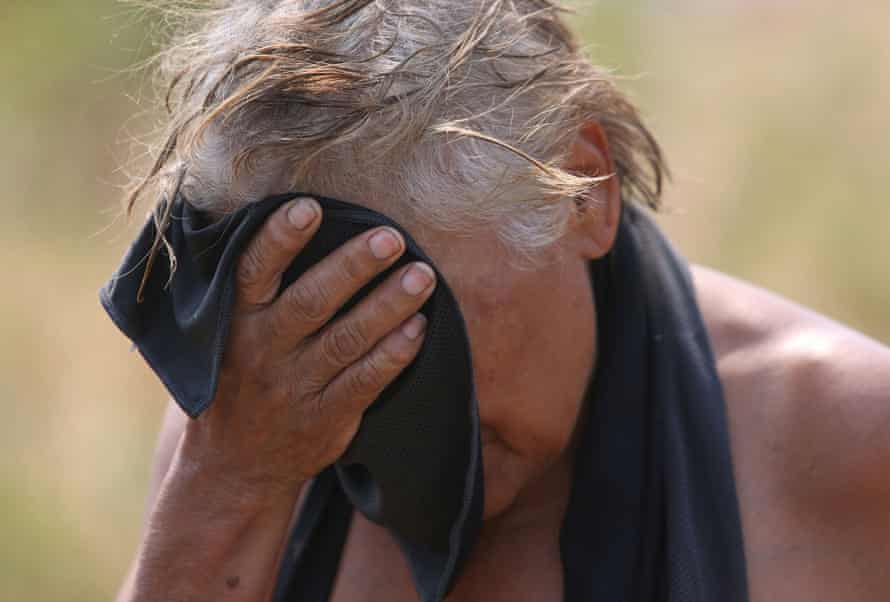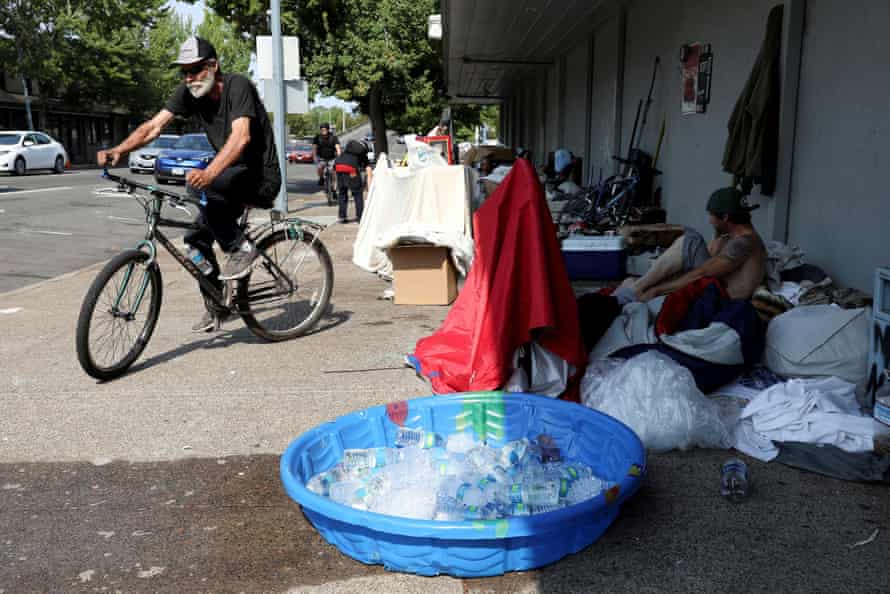A sense of déjà vu hung in the air as Washington and Oregon faced scorching temperatures in the midst of the region’s second major heatwave this summer.
Temperatures in Portland reached 102 F (39 C) by late afternoon on Thursday and Seattle reached highs in the 90s, with more heat expected on Friday.
Although the temperatures were not expected to be as severe as during the heatwave in late June, when some areas exceeded 115F (46C), several cities had put in excessive heat warnings.
In Seattle, the temperature was set to reach 96F (36C) on Friday, while the record for that day is only 92F (33C), according to Eric Schoening, a National Weather Service meteorologist. Yakima, in southern Washington, could hit 104F (40C) Friday.
In Beaverton, Oregon, where temperatures could reach 102F (39C) again on Friday, the community center was offering overnight air-conditioned shelter for those in need.

Portland’s 102 F (39 C) on Thursday was hotter than temperatures recorded in Phoenix, where the high in the desert city was a below-normal 100 F (38 C). Portland typically sees temperatures in the 80s during August.
Volunteers scrambled to hand out water, portable fans, popsicles and information about cooling shelters to homeless people living in isolated encampments on the outskirts of the city.
Oregon governor Kate Brown and Portland mayor Ted Wheeler had declared a state of emergency earlier in the week due to the extreme heat.
Brown said in a video posted on Twitter on Wednesday: “Please treat these hot temperatures seriously. Heat related illnesses are preventable. Please learn the symptoms. If you don’t have air conditioning in your home, make a plan right now to find a cool location you can access.”
Seattle mayor Jenny Durkan tweeted Thursday: “Dangerously high temperatures ahead for Seattle.” She included a map of cooling center locations, a list of drinking fountains and advice for staying cool.
Seattle officials said they would be monitoring key infrastructure such as power systems, water systems, roadways and bridges, and would be coordinating outreach teams who can help some of the most vulnerable people deal with the high temperatures.
Officials in Washington and Oregon urged residents to stay hydrated, check on loved ones and make use of the dozens of cooling centers at libraries, community centers and other spaces throughout the region. In Portland, the local transit system was offering free rides to cooling centers during the heatwave.
“Heat can kill. Make a plan to stay cool,” warned a recording sent to Portland residents.
The heatwave comes mere weeks after record-high temperatures resulted in hundreds of deaths across the US Pacific north-west and western Canada. In Oregon, 96 people were killed in the June heatwave, including a farmworker.
Meteorologists reported that the extreme temperatures came from two pressure systems, while a study from World Weather Attribution determined that the heatwave would have been “virtually impossible without human-caused climate change”.

Officials attributed this week’s heatwave to a high-pressure system or heat dome over the north-east Pacific Ocean. It is expected to move to the east at the end of the weekend, according to Schoening.
At the same time, Larry O’Neill, Oregon’s state climatologist, previously told the Guardian: “These sorts of heatwaves are being made worse and more impactful because of climate change.”
Temperatures are expected to peak Friday and Saturday, cool slightly in western Washington and western Oregon on Saturday, and then really start to significantly cool down across the entire area Sunday and Monday, according to Schoening.
Washington and Oregon residents will also have to contend with smoke from fires across Idaho, Washington and British Columbia, according to Schoening. There are air quality concerns due to the smoke, he said, but it could also serve to cool the region slightly.
“With that smoke in the air, it will reflect some of that sunlight back into space, so that could help to cool temperatures a few degrees,” he said.
Scorching weather also hit other parts of the US this week. The National Weather Service said heat advisories and warnings are in effect from the Midwest to the Northeast and mid-Atlantic through at least Friday.


Average Rating